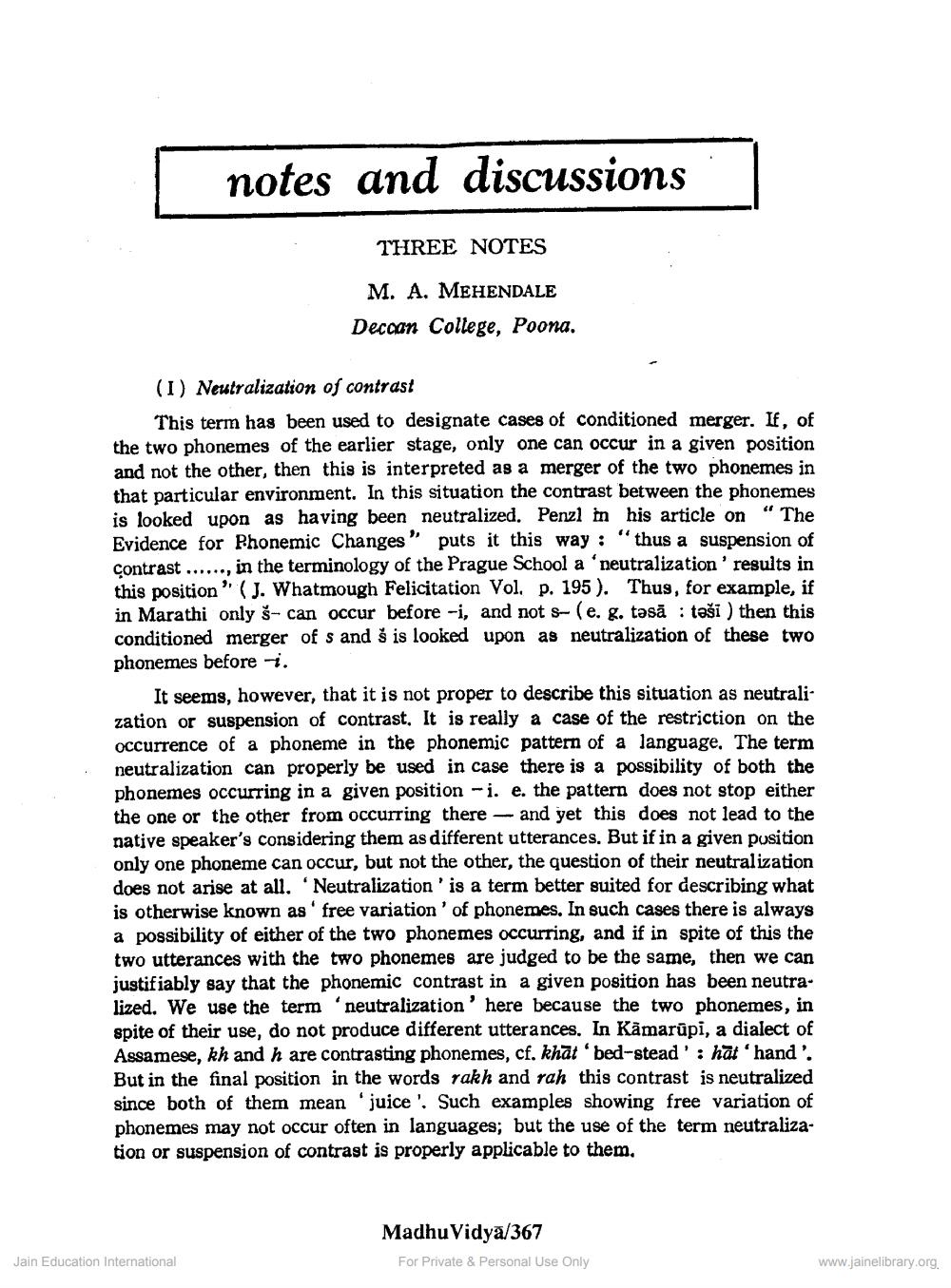________________
notes and discussions
THREE NOTES M. A. MEHENDALE Deccan College, Poona.
(1) Neutralization of contrast
This term has been used to designate cases of conditioned merger. If, of the two phonemes of the earlier stage, only one can occur in a given position and not the other, then this is interpreted as a merger of the two phonemes in that particular environment. In this situation the contrast between the phonemes is looked upon as having been neutralized. Penzl in his article on "The Evidence for Phonemic Changes” puts it this way : "thus a suspension of contrast ......, in the terminology of the Prague School a 'neutralization results in this position" (J. Whatmough Felicitation Vol. p. 195). Thus, for example, if in Marathi only š- can occur before -i, and not s-(e. g. təsā : təši ) then this conditioned merger of s and šis looked upon as neutralization of these two phonemes before i.
It seems, however, that it is not proper to describe this situation as neutralization or suspension of contrast. It is really a case of the restriction on the occurrence of a phoneme in the phonemic pattern of a language. The term neutralization can properly be used in case there is a possibility of both the phonemes occurring in a given position -i. e. the pattern does not stop either the one or the other from occurring there - and yet this does not lead to the native speaker's considering them as different utterances. But if in a given pusition only one phoneme can occur, but not the other, the question of their neutralization does not arise at all. Neutralization is a term better suited for describing what is otherwise known as free variation of phonemes. In such cases there is always a possibility of either of the two phonemes occurring, and if in spite of this the two utterances with the two phonemes are judged to be the same, then we can justifiably say that the phonemic contrast in a given position has been neutralized. We use the term 'neutralization here because the two phonemes, in spite of their use, do not produce different utterances. In Kâmarūpi, a dialect of Assamese, kh and h are contrasting phonemes, cf, khat 'bed-stead': hat'hand'. But in the final position in the words rakh and rah this contrast is neutralized since both of them mean "juice'. Such examples showing free variation of phonemes may not occur often in languages; but the use of the term neutralization or suspension of contrast is properly applicable to them.
Madhu Vidya/367
For Private & Personal Use Only
Jain Education International
www.jainelibrary.org




